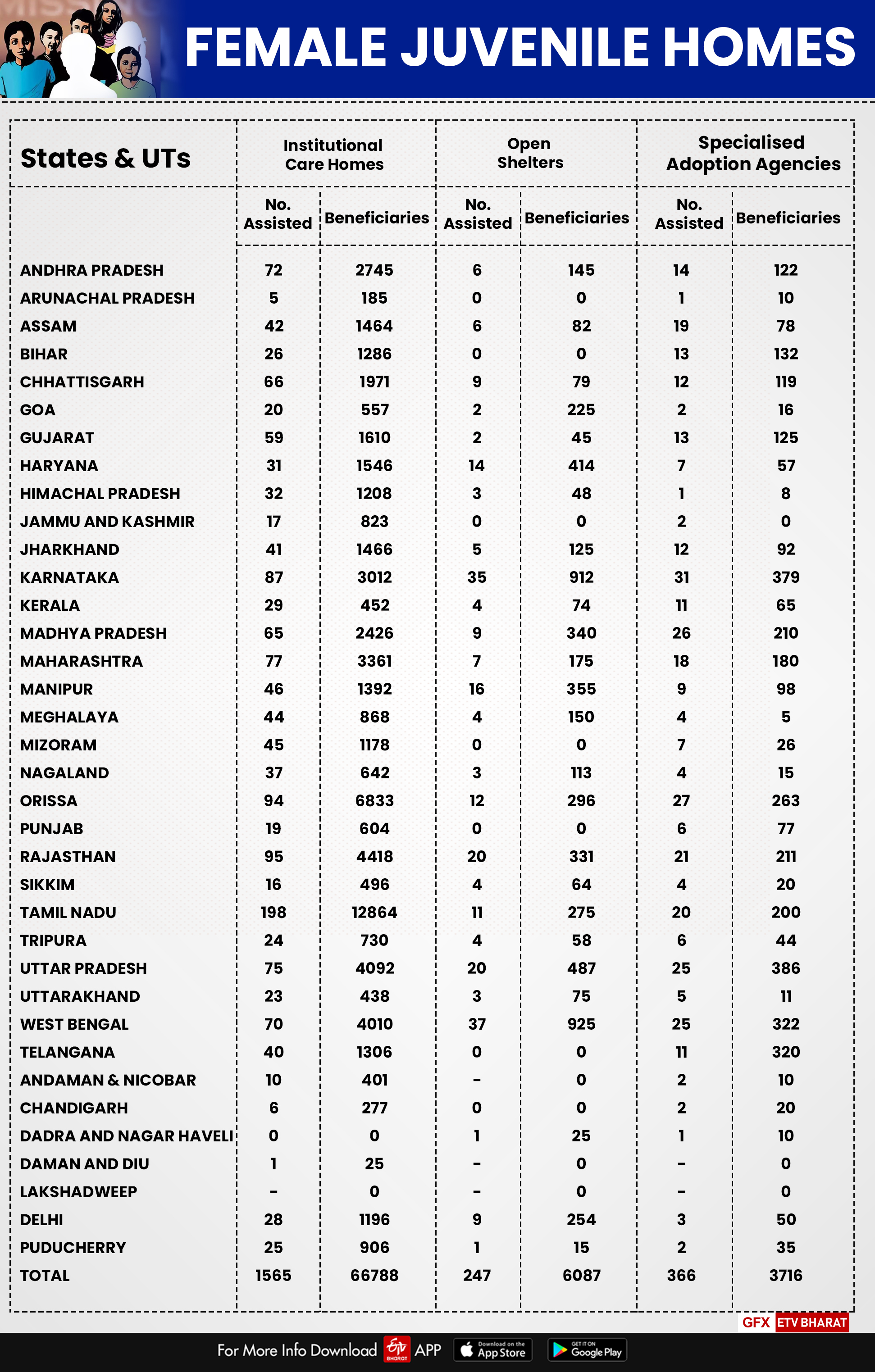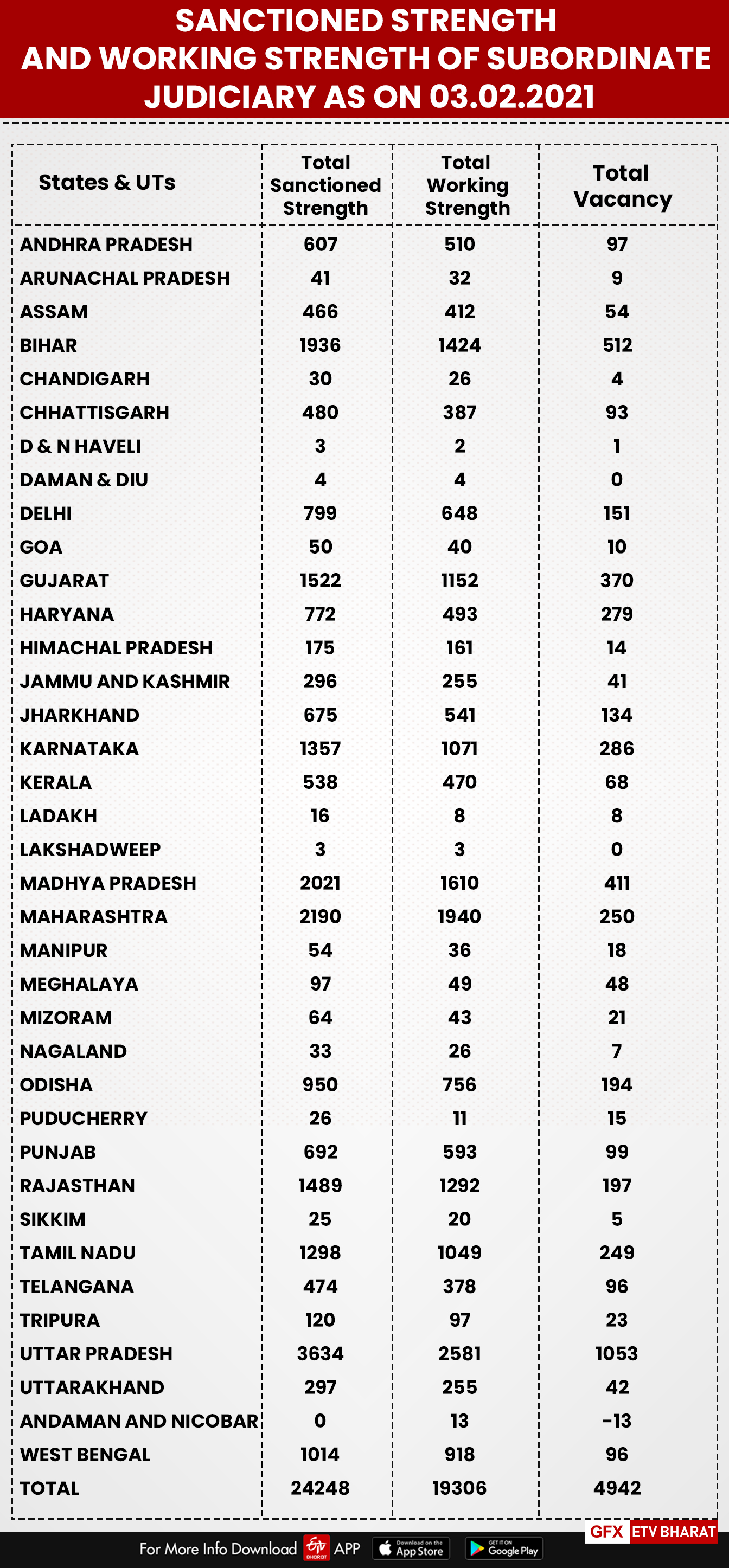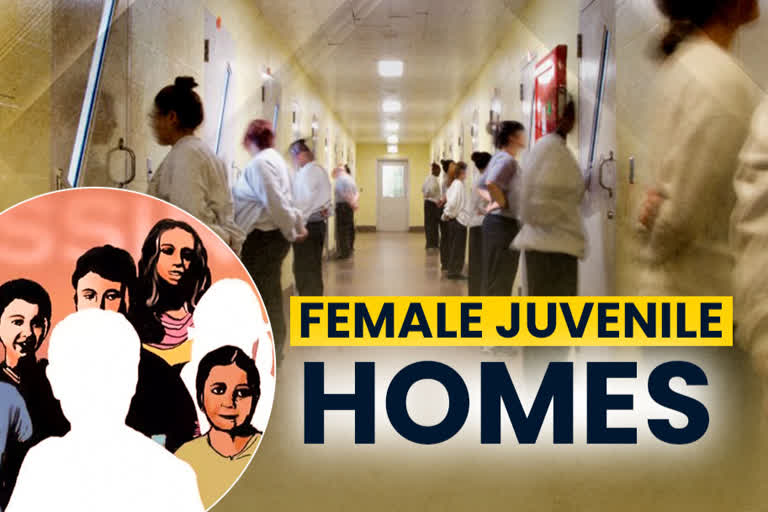Hyderabad: Female juvenile homes take care of young girls less than 18 years of age and those who are in need of care and protection and who are deprived and marginalised section of society. The primary framework which deals with juvenile justice is The Juvenile Justice Act, 1986.
The Juvenile Justice Act, 1986, Section 2(h) defines a juvenile as a boy who has not attained the age of sixteen years or a girl who has not attained the age of eighteen years.
This act thus provides for a special approach towards the prevention and treatment of juvenile delinquency and provides a framework for protection, treatment and rehabilitation of children in the purview of the juvenile justice system. This system does keep both the male and female child under consideration.

All the states and UTs, including West Bengal, furnishes information about the total number of Child Care Institutions (CCIs) (including Observation Homes, Special Homes and place of Safety for children in conflict with the law) along with the number of children residing in them, supported under the Child Protection Services (CPS).
READ: 86,192 people provided homes under SUH scheme
The regular monitoring and inspection of CCIs are done under Juvenile Justice (Child and Protection of Children) Act, 2015 (JJ Act) and the Juvenile Justice (Care and Protection of Children) Model Rule, 2016. The primary responsibility of execution of the Act lies with the states/UTs

National Commission for Protection of Child Rights (NCPCR) and State Commissions for Protection of Child Rights (SCPCR) have been established under Commission for Protection of Child Rights Act to oversee the implementation of JJ Act.
NCPCR has provided details regarding the number of complaints received in NCPCR relating to torture/ violence and sexual exploitation of children in CCIs during the last three years for all the states and UTs.



